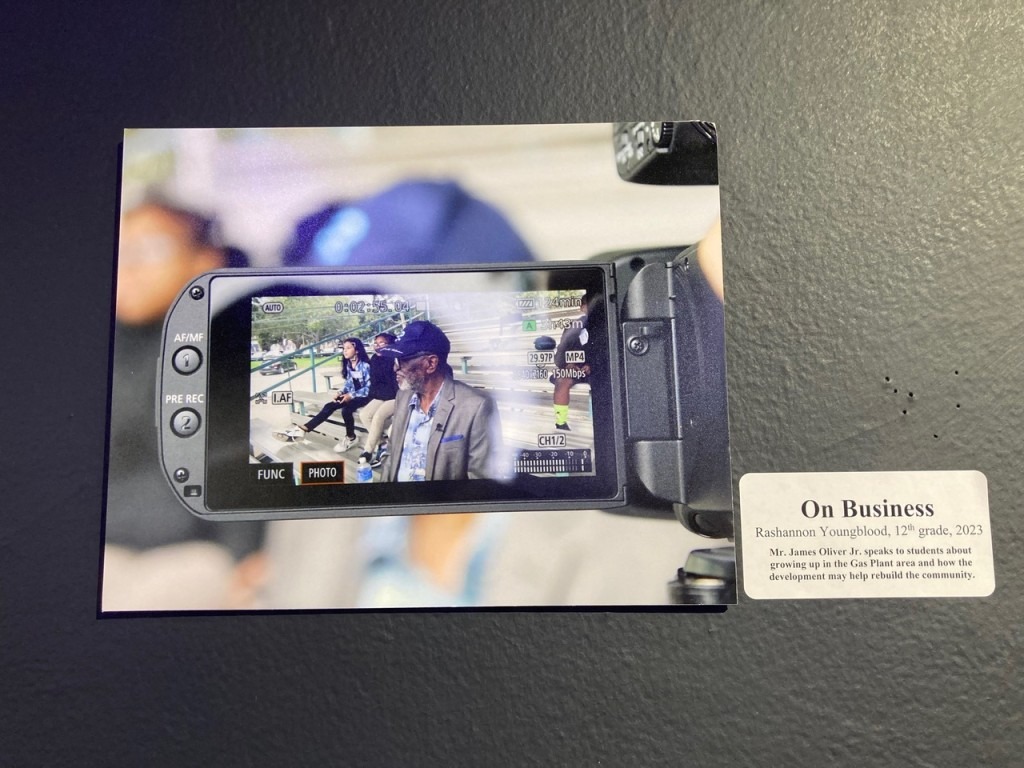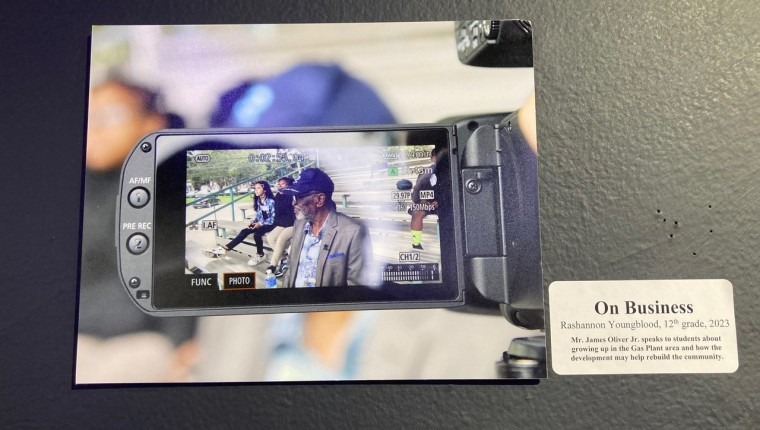While Speaking Truth to Power
Through February 3
Free
The Studio@620
Details here
“As that great philosopher Whitney Houston said, the children are our future,” Bob Devin Jones, co-founder of downtown St. Pete’s The Studio@620, reminded us in his opening remarks at the launch of this year’s Through Our Eyes: Journeys in Journalism’s Student Photography Exhibition. “Teach them well and let them lead the way.”
A strong belief in the power of education was no doubt what motivated Cynda Mort when she created a Pinellas County School magnet journalism program in 2001. Cynda called the program Journeys in Journalism.

Cynda was a friend of mine. We were colleagues at the St. Petersburg Times and often traveled together with a group of women friends that we ironically dubbed The Wild Women (most of us were more mild than wild).
A quiet woman with a wicked sense of humor, Cynda, however, really was wild — wild in the pursuit of racial equality and social justice. After she left the newspaper, she spent the rest of her life teaching students how to be good journalists.
She was convinced that the best values of journalism could help young people acquire important life skills – how to interact with others, how to ask probing questions, how to learn to listen.
And, most importantly, how to speak truth to power.
The magnet program she developed is offered at Melrose Elementary, John Hopkins Middle School and Lakewood High, schools located in Midtown, a predominately Black area in South St. Pete that historically had been marginalized.
To instill pride in that area, Cynda and her team came up with an ingenious idea – teach students to handle a camera and then set them loose in the neighborhoods surrounding the school that largely had been ignored by the powers that be.
The photographs were collected in an annual exhibit called Midtown Through Our Eyes, now simply called Though Our Eyes.

The first exhibit of these students’ photographs was held at the now-defunct International Museum at Maas Brothers in downtown St. Petersburg. When The Studio’s first board chair Michelle Groff saw that exhibit, she went to Devin Jones and convinced him to host it the next year at The Studio@620. That was 18 years ago. Through Our Eyes has been held at The Studio ever since.
“This program is not only about teaching students how to become professional photographers,” Devin Jones reminds us. “It’s also about teaching them to look people in the eye and shake their hands.”
Three years ago he asked one of the young student photographers whose photographs were exhibited, “So what do you want to do when you grow up?”
The student answered, “I’m doing it.”

Sadly, Cynda Mort died of cancer in 2015 but the legacy of what she started can be seen on the walls of The Studio@620 every year.
Cynda’s legacy also lives on in the Cynda Mort Scholarship for Outstanding Journalist given by Journeys in Journalism annually to two Lakewood High School journalism students. There’s now a Cynda Mort Newsroom at John Hopkins Middle School.
This year’s exhibit of Through Our Eyes will be open to the public for free through February 3. The photographs on display would have made Cynda’s heart soar.
They also give hope to those of us who have been worried about journalism’s future.
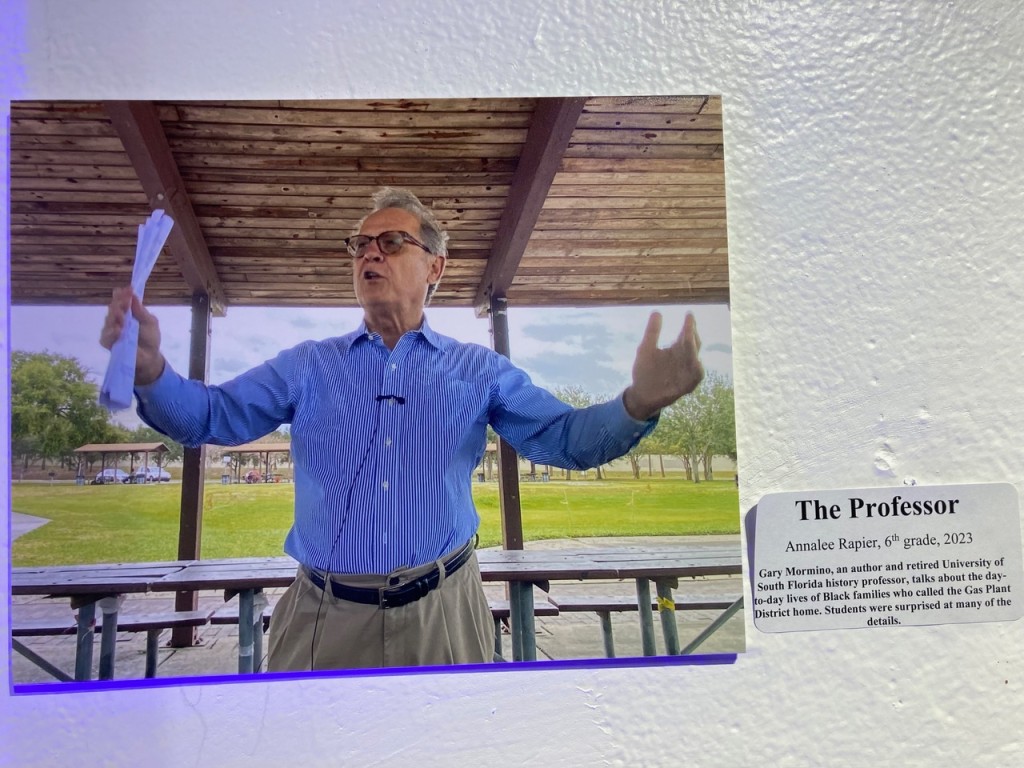
The photographs chronicle the latest Journeys in Journalism project – an in-depth investigation into the city’s plans for the Gas Plant District, the 86-acre site that will include a new ballpark for the Rays (to replace Tropicana Field) and the surrounding area, the largest redevelopment plan in St. Petersburg’s history.

Nearly 40 years age Black residents, businesses and churches in the Historic Gas Plant District were forced to relocate when the original stadium was built for the Rays (then known as the Devil Rays). They were promised jobs, affordable housing and equitable development that never materialized. Will this new redevelopment plan finally honor those broken promises?
By investigating this, the students are performing one of journalism’s most urgent tasks – holding power accountable.
“Thanks to a generous $38,000 grant from Florida Humanities, Poynter and the Pinellas County School District’s Journeys in Journalism program, last year these students embarked on an ambitious reporting project: trying to uncover the history of the Gas Plant District and look ahead to the redevelopment of the Ray’s Tropicana Field,” explained Alex Mahadevan, director of MediaWise at the Poyner Institute.
“Throughout this year, students from Melrose, John Hopkins and Lakewood have been producing photographs. Some of them you see here tonight. Also podcasts, artwork and a mini documentary about the redevelopment and how it will impact the neighborhood and most importantly, the people in that neighborhood.
“Their first big assignment in November was when all three schools took a field trip to the area to learn about its residents and the future of the project.”
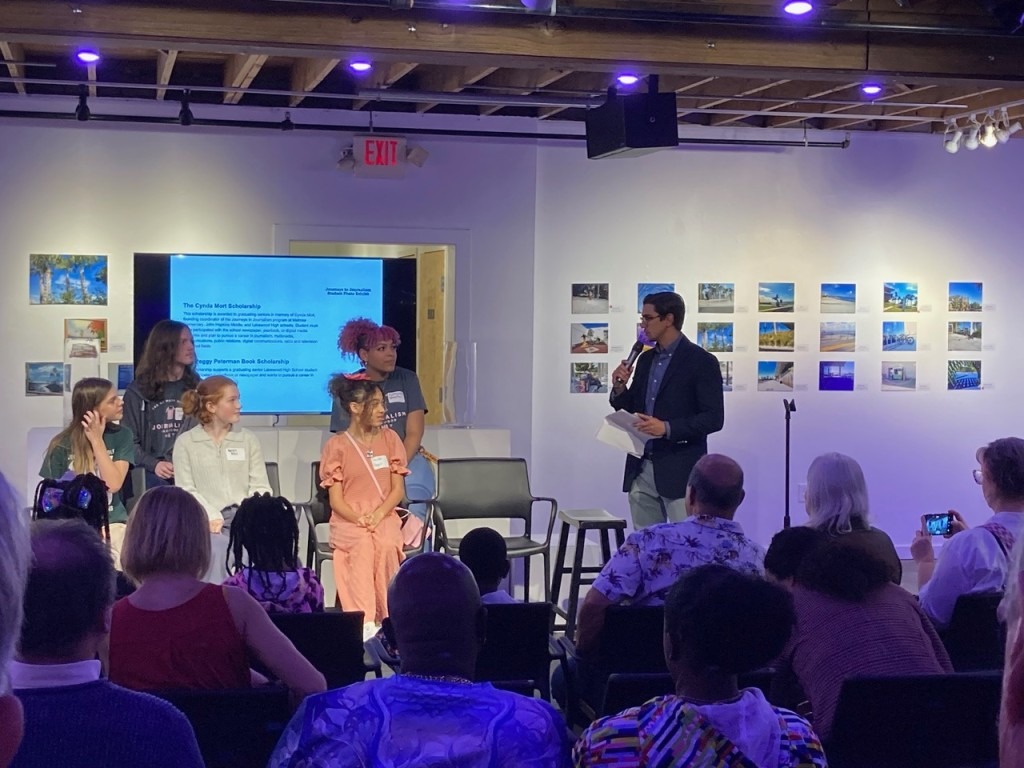
On that field trip the students interviewed historian Gary Mormino, Woodson African American Museum of Florida docent Lynnette Hardy, president of the African American Heritage Association and Griot Gwendolyn Reese, and baseball player and coach James Oliver Jr. who grew up in the Gas Plant neighborhood.

You can see the documentation of the interviews in several photographs on display in Through Our Eyes – The Professor by 6th grader Annalee Rapier and Shelter Talk by 8th grader Dion Taylor, History Lesson by 6th grader Brandon Laurence, Black History by 4th grader Juliet Mitchell and The Grio by 6th grader Charlotte Bass, Archival and On Business by 12th grader Rashannon Youngblood and Beginnings by 10th grader Ca’Mari Hopkins.
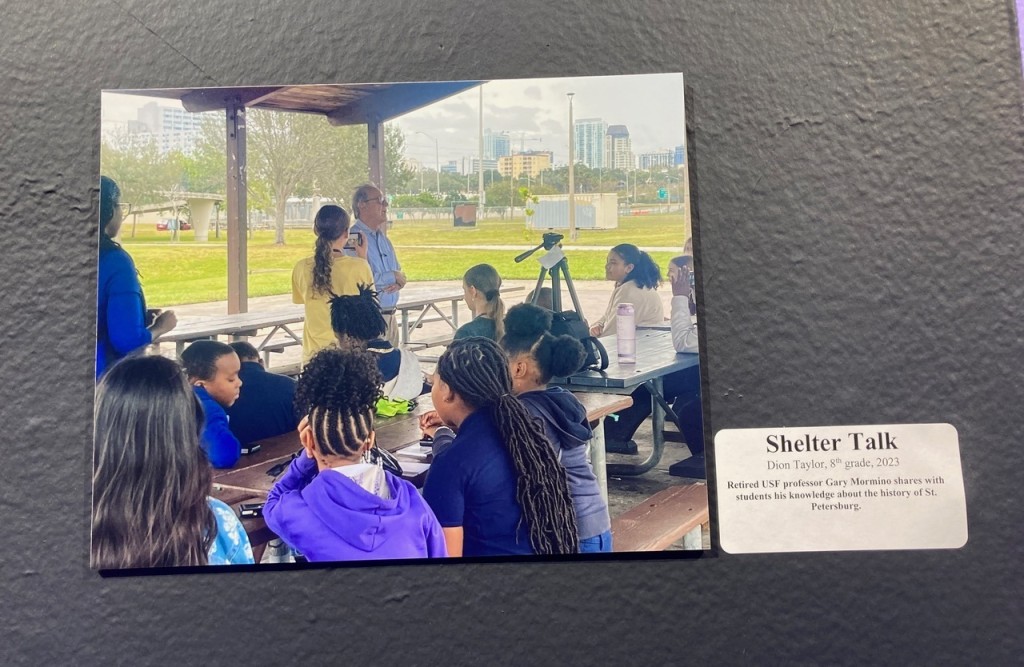
At the exhibit’s opening night ceremony Mahadevan interviewed five students — ranging in age from 10 to 15 — who participated in that field trip, asking each of them about their personal experiences.
“What I heard from these students is – keep checking our own opinions. Listen to people who disagree with us. Talk to as many people as you can. Take the controversy head on. Don’t be afraid to report on thorny issues.”
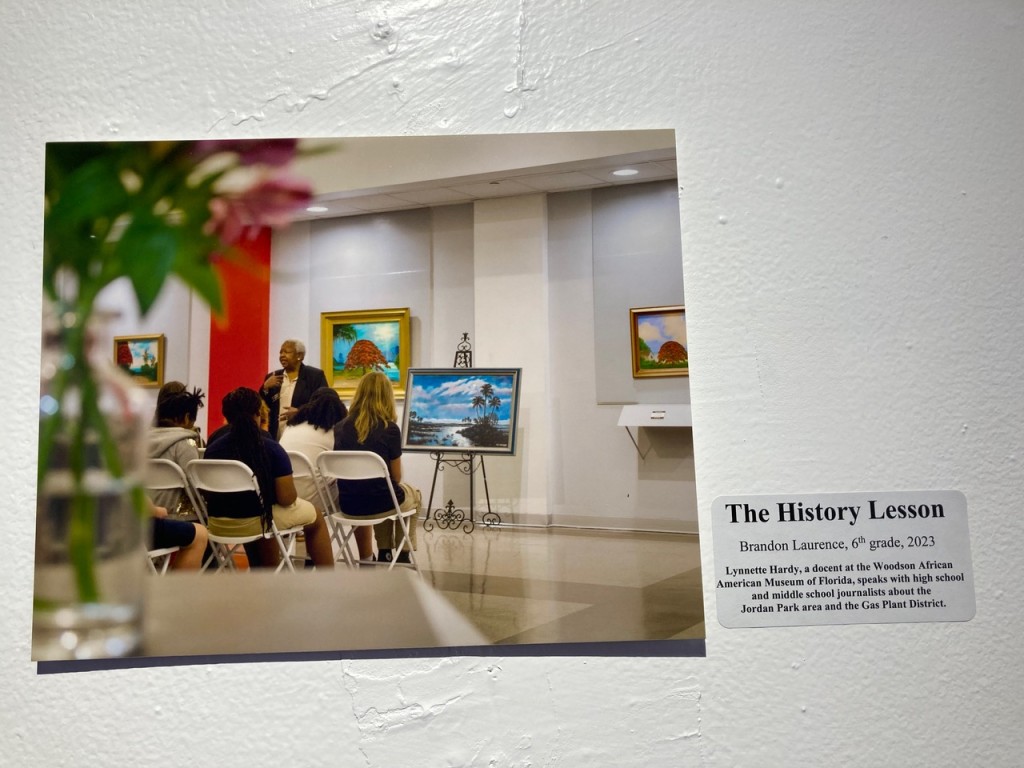
”When we started MediaWise in 2018,” Mahadevan adds, “our goal was to teach a million teenagers how to separate fact from fiction and fight misinformation – which is the number one problem right now. Right?
“When I look at these students who are here tonight with us and who’ve been involved with us. . . I see kids who already think like journalists. In fact, they think better than a lot of current journalists.”
